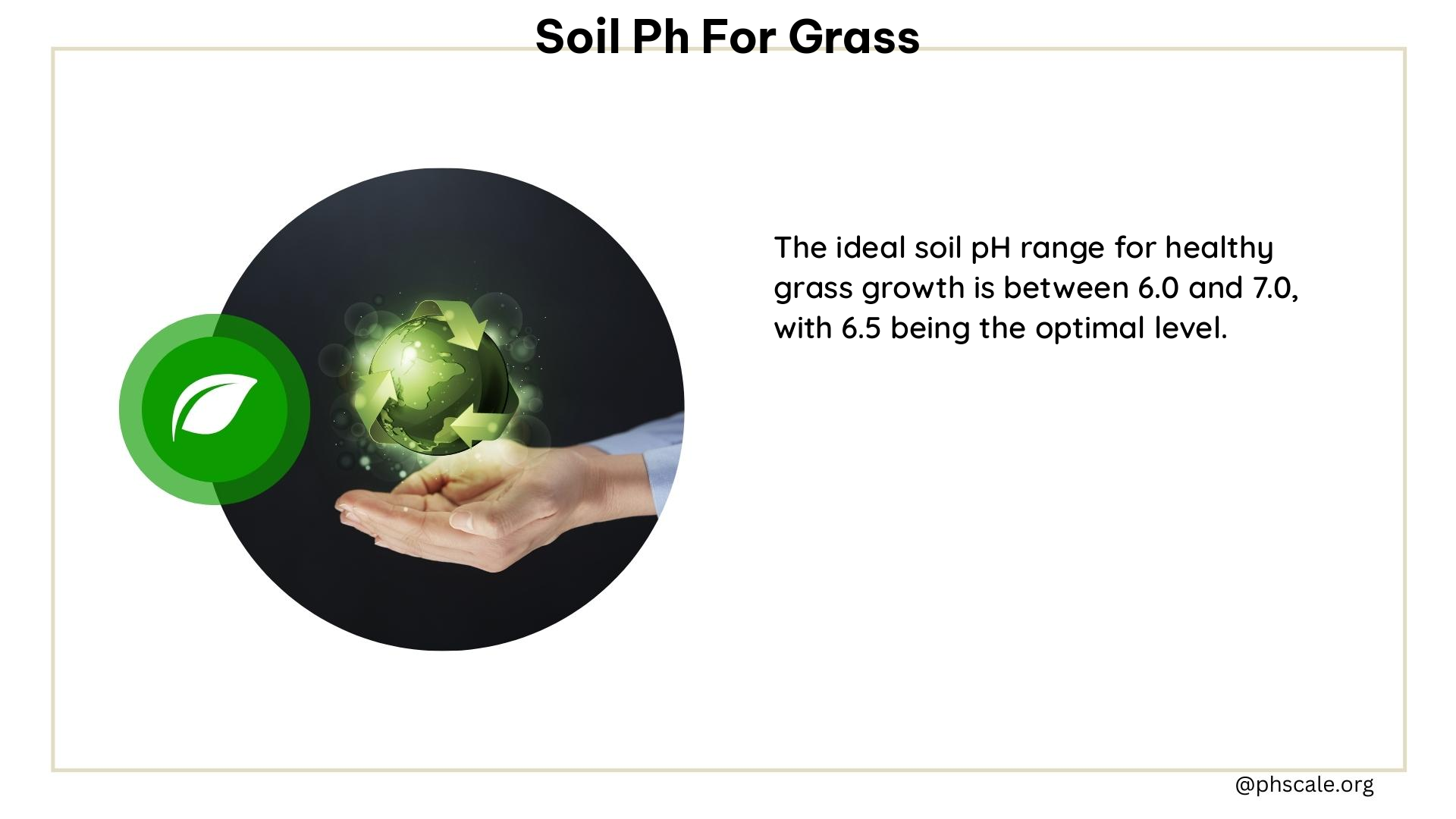The ideal pH range for grass is between 6.0 and 7.0, with most grass types thriving in a slightly acidic to neutral soil environment. Maintaining the proper soil pH is crucial for ensuring optimal nutrient availability, promoting healthy root growth, and achieving a vibrant, lush lawn.
Understanding Soil pH
Soil pH is a measure of the acidity or alkalinity of the soil, ranging from 0 to 14, with 7 being neutral. Soils with a pH below 7 are considered acidic, while those above 7 are alkaline. The ideal pH range for most grasses falls between 6.0 and 7.0, with 6.5 being the “sweet spot” that provides the best balance of nutrients and growing conditions.
Acidic Soil
Soil with a pH below 6.0 is considered acidic, often caused by a lack of nutrients like calcium, magnesium, and potassium. Acidic soil is commonly found in areas with heavy rainfall and poor drainage, where these essential nutrients have been leached from the soil.
Alkaline Soil
Soil with a pH above 7.0 is considered alkaline, which can be a common issue in dry climates. Alkaline soil can be treated with sulfur to lower the pH and create a more favorable environment for grass growth.
Balancing Soil pH

Maintaining the ideal pH range for your grass lawn requires regular monitoring and adjustments as needed. Here are some key methods for balancing soil pH:
Lime
Lime is used to raise the pH of acidic soil, typically applied in the fall or early winter. Lime can be sourced from ground limestone or wood ashes and should be incorporated into the soil to allow for proper dissolution.
Sulfur
Sulfur is used to lower the pH of alkaline soil, also applied in a similar manner to lime, during the fall or early winter.
Soil Testing
Regularly testing your soil’s pH is essential for understanding its current state and determining the appropriate amendments needed. Soil testing can be done using home kits or by sending samples to local or state soil testing laboratories.
Consequences of Imbalanced Soil pH
Maintaining the ideal soil pH range is crucial for the health and vitality of your grass lawn. Imbalanced pH can lead to a variety of issues:
- Unhealthy Turf: Soil pH outside the ideal range can result in thin, discolored, and poorly growing grass.
- Nutrient Availability: Imbalanced pH affects the availability of essential nutrients for grass, leading to poor growth and health.
- Toxicity: Highly acidic soil can cause toxicity from aluminum and manganese, damaging roots and affecting plant growth.
Home Remedies and DIY Tips
While professional soil testing and treatment are recommended, there are some simple home remedies and DIY tips you can try to assess and manage your lawn’s soil pH:
Vinegar and Baking Soda Test
A simple, though not highly accurate, method to determine if your soil is acidic, alkaline, or neutral is to mix a small amount of soil with vinegar (for acidic soil) or baking soda (for alkaline soil). Bubbling or fizzing indicates the presence of acidity or alkalinity, respectively.
Fall Application
Applying lime or sulfur in the fall allows for proper dissolution into the soil before the grass-growing season, ensuring the pH adjustments are in place for optimal growth.
Contaminants and Chemicals
Various external factors can influence the pH of your lawn’s soil, including:
- Rain: Acidic compounds like nitric, sulfuric, and carbonic acid in rainfall can make soil more acidic, especially in urban areas.
- Fertilizer: The type of fertilizer used can affect the soil’s pH, so it’s essential to choose products that do not disrupt the balance.
- Location: Soil pH is naturally influenced by geographic location, with some areas tending towards acidic or alkaline soils.
Professional Help
If you’re unsure about managing your lawn’s pH or need more extensive care, consider hiring a professional lawn care service. They can provide expert guidance, soil testing, and the appropriate treatments to ensure your grass thrives in the ideal pH range.
References:
1. Weed Man. (n.d.). Balancing Your Lawn’s pH Levels. Retrieved from https://weedman.com/blog/balancing-your-lawn-s-ph-levels
2. Sunday Lawn Care. (n.d.). pH and Your Lawn. Retrieved from https://www.getsunday.com/shed/lawn/ph-and-your-lawn
3. Wright Mowers. (n.d.). How to Set Soil pH for Lawns. Retrieved from https://www.wrightmfg.com/articles/how-to-set-soil-ph-for-lawns/
4. The Lawn Forum. (2020). Soil Test – Ph so low … no wonder nothing can grow. how to fix. Retrieved from https://www.thelawnforum.com/threads/soil-test-ph-so-low-no-wonder-nothing-can-grow-how-to-fix.21611/
5. LawnStarter. (2024). Why, When, and How to Test the Soil pH of Your Lawn. Retrieved from https://www.lawnstarter.com/blog/lawn-care-2/ph-soil-test-lawn-grass/.
